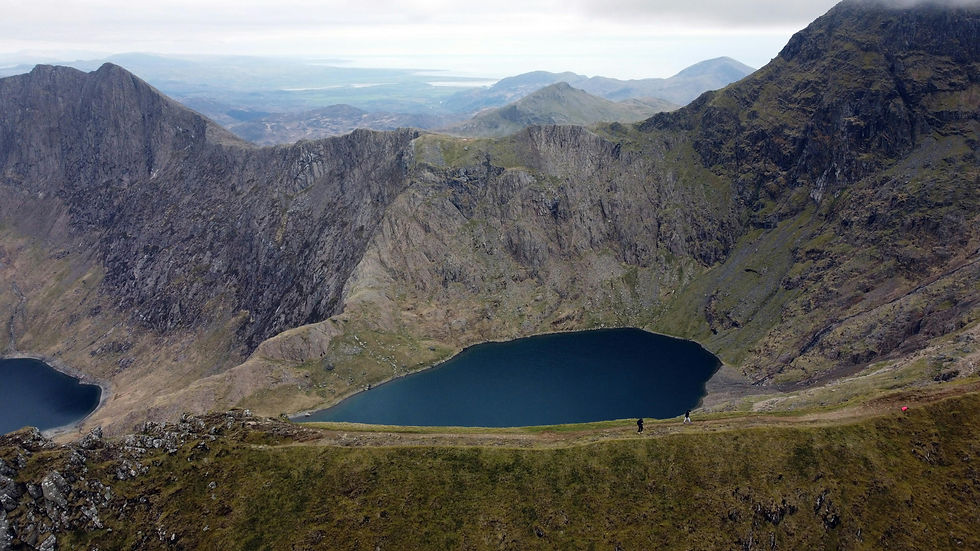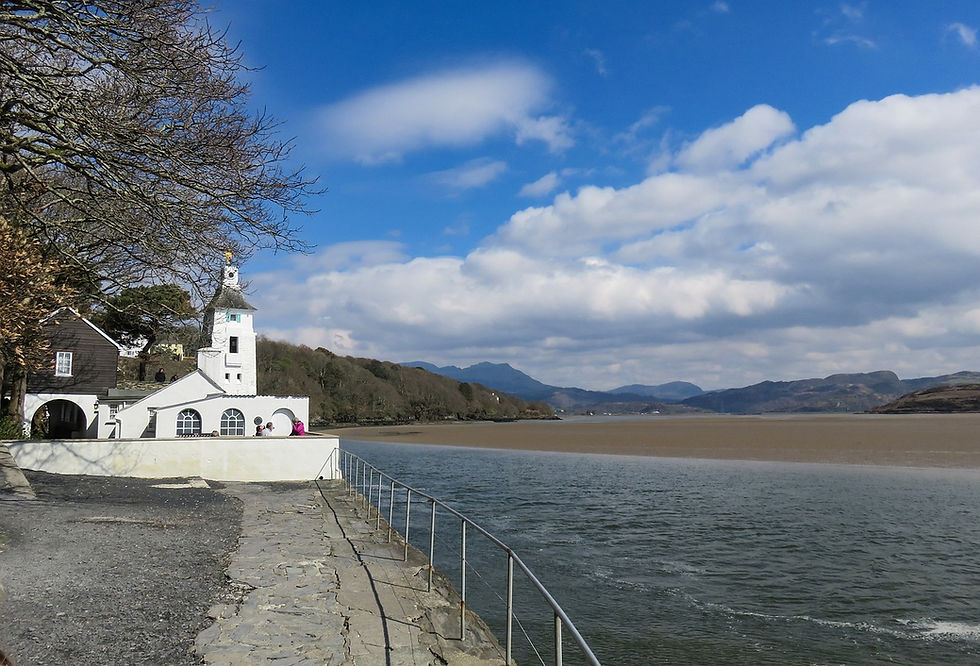20 Facts About Eryri (Snowdonia) and the Surrounding Area
- calliejonesprints
- Mar 20, 2024
- 4 min read
Did you know "Yr Wyddfa" is the Welsh-language name for Snowdon and it is the highest mountain in England and Wales? A popular challenge for hikers and climbers, it offers stunning views of the surrounding countryside and the rest of Eryri (or Snowdonia in English). Here's 20 more facts about the region that you may not have known.

The Ogwen Valley is home to a number of waterfalls, including the Swallow Falls and the Rhaeadr Fawr. These waterfalls are a popular tourist attraction, and they offer stunning views of the surrounding mountains.
The mountain of Tryfan is said to be the resting place of the legendary Welsh giant, Idris Gawr (or Idris the Giant in English).
According to legend, Idris Gawr was so large that he could step from one mountain top to another.
The village of Betws-y-Coed is known as the "Gateway to Snowdonia." It is a popular starting point for walks and hikes in the mountains, and it is also home to a number of shops, restaurants, and cafes.
Snowdonia is home to a number of ancient stone circles and other prehistoric monuments. These monuments are thought to date back to the Neolithic and Bronze Age periods, and they offer a glimpse into the lives of the people who lived in the area thousands of years ago.
The mountain of Cadair Idris is said to be the home of the mythical Welsh wizard, Merlin. According to legend, Merlin created a magical pool on the mountaintop, which is said to have healing powers.

The village of Portmeirion is a unique and quirky village that was built in the early 20th century by the Welsh architect, Clough Williams-Ellis. The village is designed in an Italianate style, and it is home to a number of colourful buildings, gardens, shops and beautiful walking trails.
The 1960s cult series “The Prisoner” was filmed here and regularly attracts enthusiasts on a pilgrimage to its filming location every year.
The Ffestiniog and Welsh Highland Railway is a narrow-gauge railway that runs through Snowdonia. The railway offers stunning views of the mountains, and it is a popular tourist attraction.
The Welsh mountain pony is a breed of pony that is native to Snowdonia. These ponies are known for their hardiness and sure-footedness, and they are often used for trekking and riding in the mountains.
The village of Llanfairpwllgwyngyllgogerychwyrndrobwllllantysiliogogogoch is the longest place name in Europe. It means "The Church of St. Mary in the Hollow of the White Hazel near a Rapid Whirlpool and the Church of St. Tysilio near the Red Cave." People flock from all around the world for a (wide angle) photo of the train sign on its famous platform.
Snowdonia is home to the largest population of wild goats in the UK. These goats are thought to have been introduced to the area by Bronze Age settlers, and they have thrived in the rugged mountain terrain.
The town of Blaenau Ffestiniog was home to the largest slate mine in the world. The mine was once a major employer in the area, but it is now closed. However, it is still possible to visit the mine and learn about its history. Travel there from Porthmadog on the iconic Ffestiniog Steam railway.
The village of Beddgelert is home to a number of tea rooms and cafes that serve the famous traditional Welsh cakes. These cakes are made with a mixture of flour, butter, sugar, and currants, and they are often served with a cup of tea.
The village of Llanberis is home to the National Slate Museum. This museum tells the story of the slate industry in Snowdonia, and it is a great place to learn about the history and culture of the area.
The walled town of Caernarfon is home to a number of historical sites, including Caernarfon Castle and the Royal Welsh Fusiliers Museum. It also has lots of great places to eat and some quirky independent shops on Palace street.
Caernarfon Castle was built by King Edward I in the 13th century, and it is one of the most iconic castles in Wales.
The village of Harlech is home to Harlech Castle. This castle was built by King Edward I in the 13th century, and it is a UNESCO World Heritage Site.
The lively harbour town of Porthmadog is a popular tourist destination. It is home to a number of vibrant shops, restaurants, and cafes, as well as the main station for the incredible Ffestiniog and Welsh highland steam railway. It is just around the corner to the Italianate village of Portmeirion.
The popular seaside town of Criccieth has beautiful beaches and is home to many shops and restaurants as well as Criccieth Castle. This castle was built by Llywelyn the Great in the 13th century, and it is a popular tourist attraction.
The seaside town of Abersoch is a very popular sailing destination and hosts a number of regattas and races. It boasts beautiful beaches, some great restaurants and pubs as well as vibrant shopping scene.
North Wales is home to the smallest house in Great Britain, which is cozily squeezed into the end of a terrace of houses on Conwy's quayside. It measures just 72 inches across, 122 inches high and 120 inches deep.
Here are some more reasons to visit Snowdonia:
The Mountains are never far from the sea. The North Wales coast is just a short drive away and it's home to some of the most beautiful beaches in the UK. Check out our local beach at Dinas Dinlle and the iconic Trefor stacks cliff walk which is a great place to see seabirds, seals and if you are lucky the occasional pod of dolphins!
Snowdonia is also home to a number of historic castles and other attractions, such as the stunning medieval Caernarfon Castle which is only 20 minutes
Go paddle boarding, kayaking or wild swimming in the magnificent glacially formed lake of Llyn Padarn. Take a stroll around the lake, ride the Llanberis lake railway or visit the fascinating National Slate museum at the far end of the lake.




Comments